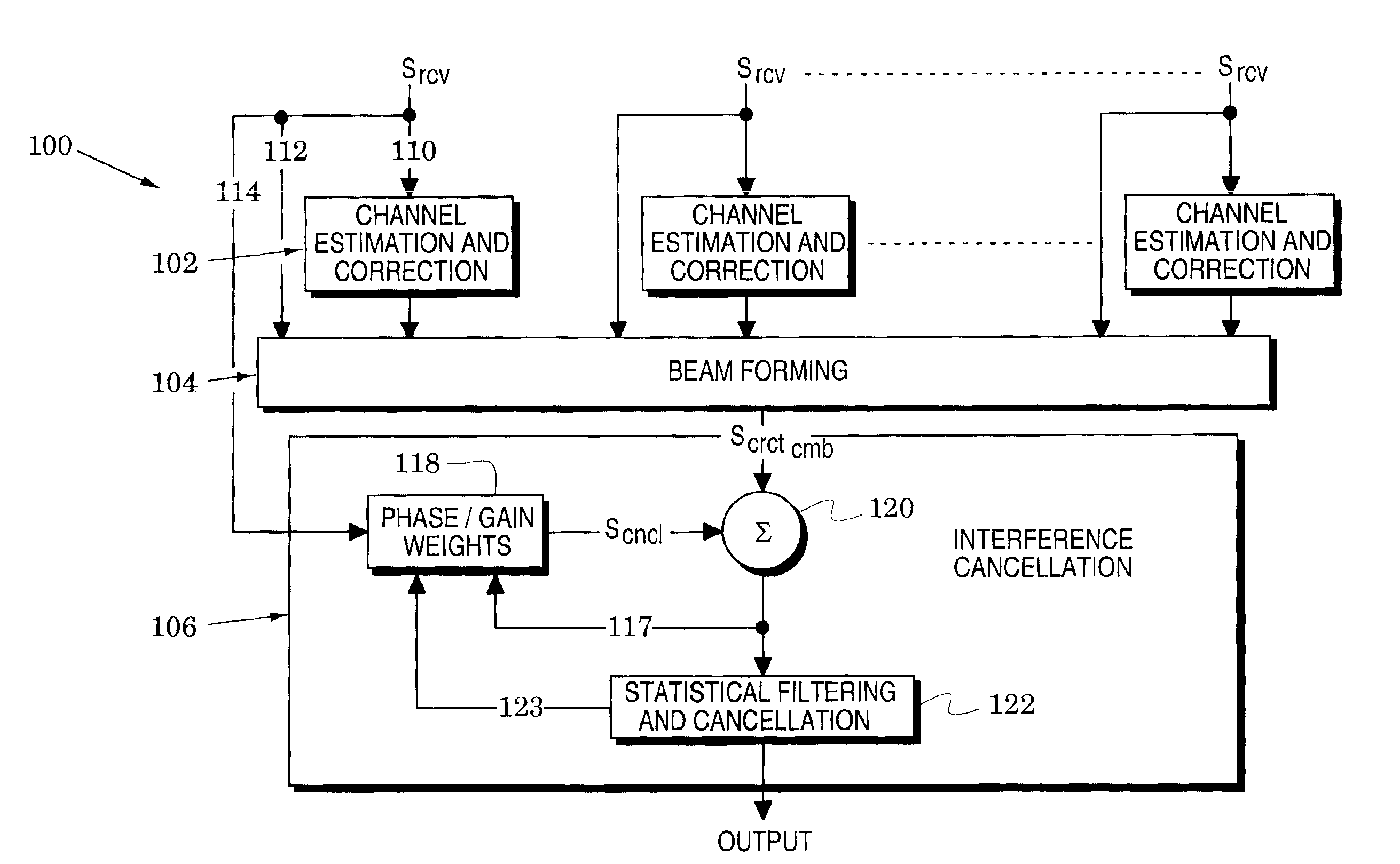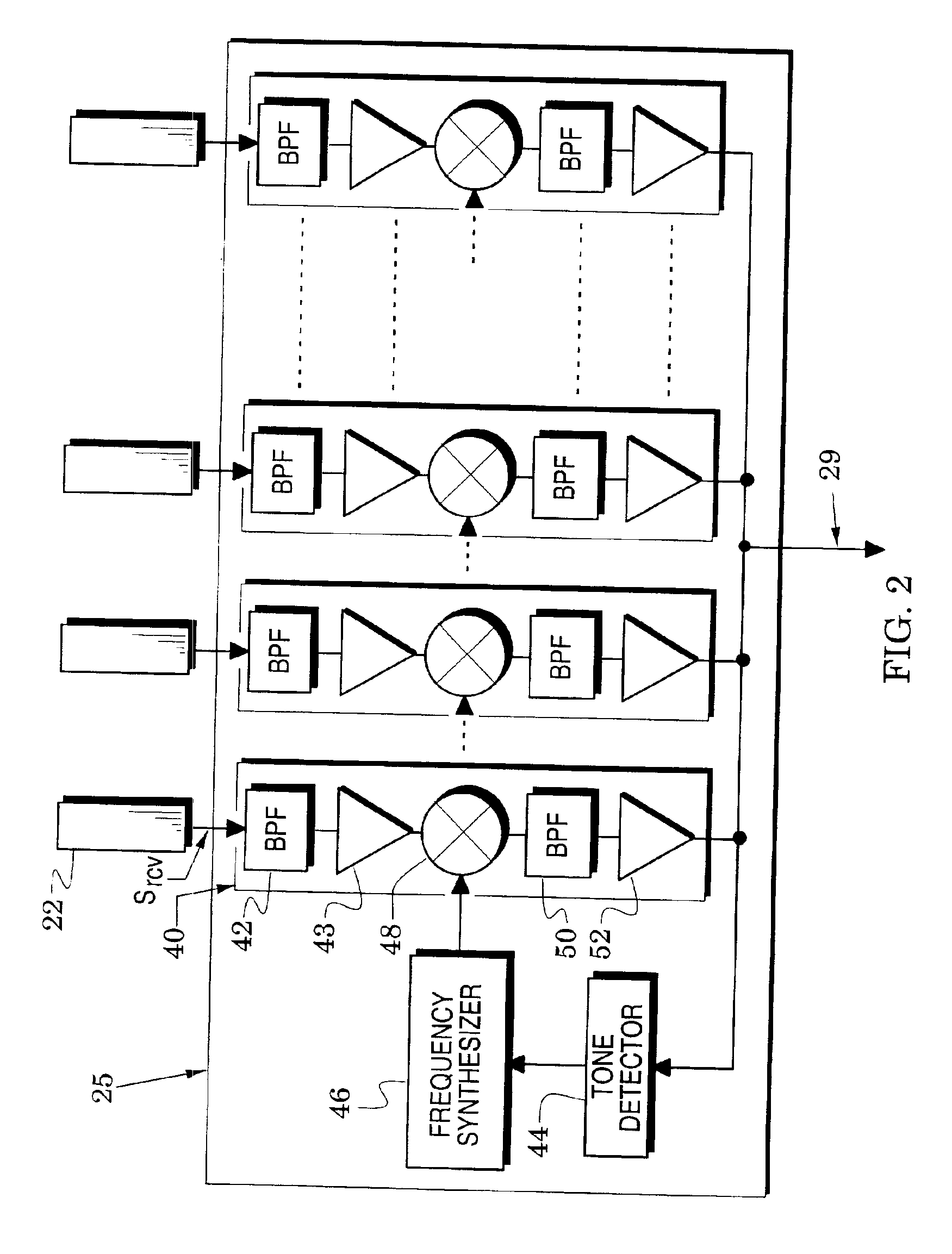Spatial-temporal methods and systems for reception of non-line-of-sight communication signals
a technology of spatial time and communication signals, applied in the field of spatial time and system reception of nonline-of-sight communication signals, can solve the problems of high path loss, interference with the reception of desired signals, communication systems, etc., and achieve the effect of reducing interference signals and reducing errors in at least one signal parameter
- Summary
- Abstract
- Description
- Claims
- Application Information
AI Technical Summary
Benefits of technology
Problems solved by technology
Method used
Image
Examples
Embodiment Construction
[0029]The present invention is directed to communication structures that are capable of receiving burst signals in high multipath, noisy environments with a small overhead in terms of superfluous data. It is further directed to methods for adding spatial processing to temporal processing to more effectively estimate the transmitted signal, based on the received signal.
[0030]The processing approach described herein is intended for use in single carrier or multi-carrier modulation formats. Although it is expected that the invention provides some benefit to reception of multi-carrier signals, it exhibits a greater improvement in reception of single carrier signals, because the multi-carrier signal reception today supercedes the performance of single carrier signals in high multipath, noisy environments.
[0031]It is noted that single carrier waveforms with varying modulation densities (e.g. BPSK, QPSK, m-PSK, 16-QAM, 64-QAM, 256-QAM, 8-VSB) typically include a signal parameter in the for...
PUM
 Login to View More
Login to View More Abstract
Description
Claims
Application Information
 Login to View More
Login to View More - R&D
- Intellectual Property
- Life Sciences
- Materials
- Tech Scout
- Unparalleled Data Quality
- Higher Quality Content
- 60% Fewer Hallucinations
Browse by: Latest US Patents, China's latest patents, Technical Efficacy Thesaurus, Application Domain, Technology Topic, Popular Technical Reports.
© 2025 PatSnap. All rights reserved.Legal|Privacy policy|Modern Slavery Act Transparency Statement|Sitemap|About US| Contact US: help@patsnap.com



